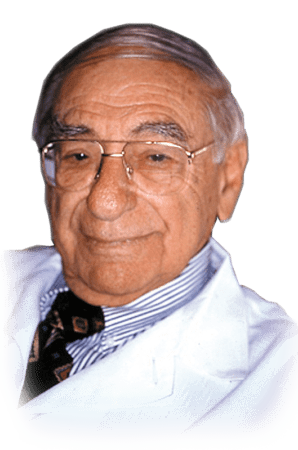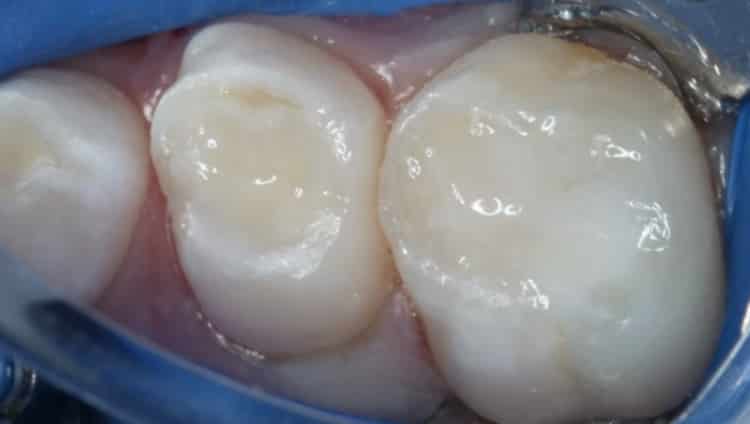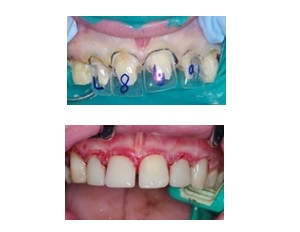By Harold Berk, DDS, DSc, FACD, FICD, FAAPD
This case was originally published in Dr. Berk’s book, Save That Tooth. Click here for more cases from Save That Tooth.
Glenn was 18 years old when he reported to the clinic at Tufts to have his maxillary left central incisor (#9) extracted. He had been under root canal treatment elsewhere for four years, but he had grown tired of the pain, pus, and dental visits, and had lost hope. I explained the long-term consequences of extracting a front tooth and convinced a reluctant Glenn to allow me to try to save the tooth.

A radiograph showed a huge periapical lesion over his central and lateral incisors (#9 and 10). Glenn was wary of extended treatment, so I recommended root canal therapy in conjunction with an apicoectomy; however, the Oral Surgery Department could not schedule his surgery for six weeks.
I immediately started root canal treatment on # 9 and 10, removed decay and debris, washed the canals with sodium hypochlorite, and placed Pulpdent Paste, a non-setting calcium hydroxide formulation, as an interim dressing to treat the abscess. After two weeks, I obturated #10 with Pulpdent Root Canal Sealer using the Pressure Syringe technique, and changed the Pulpdent Paste dressing in #9.
Glenn returned four weeks later for evaluation prior to the apicoectomy surgery, and to our surprise, he was comfortable, and a radiograph showed trabeculation occurring into the lesion (Fig. 2). I consulted with the Surgery Department, and we decided to postpone surgery. I again cleaned out the canal of #9. There was no pus, and I replaced the Pulpdent Paste.

We saw Glenn once a month for three months and changed the Pulpdent Paste dressing at each visit. A radiograph taken six months after the initial visit shows bone fill, complete reversal of the lesion, and obturation of the canals with Pulpdent Root Canal Sealer using the Pressure Syringe technique (Fig. 3).

Over the past 50 years, there are numerous reports in the dental literature on the use of non-setting calcium hydroxide paste in endodontic therapy, and Pulpdent Paste, Multi-Cal, and TempCanal Enhanced can all be used to successfully treat cases such as this.

About Dr. Harold Berk
Harold Berk practiced dentistry for almost 65 years and taught on the faculty of Tufts University School of Dental Medicine from 1946 to 2005. Save That Tooth serves as his clinical memoires and chronicals the original research in vital pulp therapy and root canal therapy, the techniques he pioneered, and some of the fascinating and often complicated cases that were routinely treated by this most talented of educators and dental practitioners.




